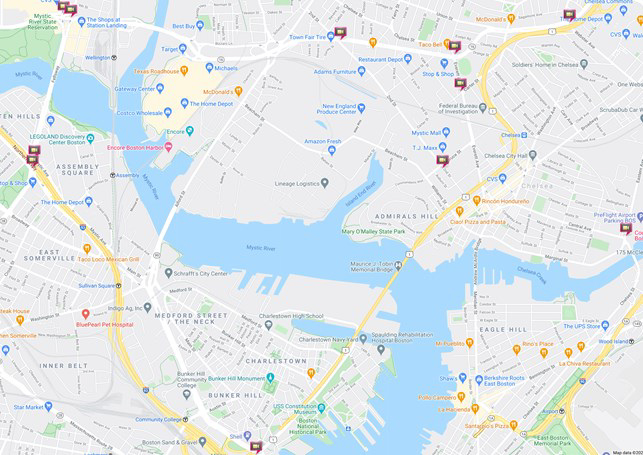Project Highlight – Chelsea, MA Route 1 Viaduct Project – February 2021
This is a little story about how to get the job done from Southie to Harvard Yard, and anywhere in between.
Massachusetts DOT (MASSDOT) had a project that would include up to 13 portable camera trailers to be deployed for 18 months during a bridge reconstruction project along Route 1. The job also required that the project contractor would hire a traffic engineer to monitor and make signal timing adjustments as needed during the construction process.
Embodying the “Bravery” core value, at the time we bid this job we didn’t own any camera trailers. We did, however know of a potential source. To make things just that much more challenging, the camera trailer locations were almost impossible to place when looking at the Google street view. In reviewing the plans it appeared as though the camera placement was such that the MASSDOT could monitor congestion at various intersections, though the specification didn’t explicitly connect the temporary camera systems to the traffic monitoring and signal timing specification item.
Along the East Coast, the industry is very tight for smart work zone applications and full of “wise guys,” if ya know what I mean. The only way we had a chance at the work was to be anonymous, and secondly be competitive.
Our approach to wining the job was simple: find a traffic engineer that needed to monitor traffic and convince them that they could monitor traffic using cam-eras. An added potential opportunity was to find a local Disadvantaged Business Enterprise (DBE) that could help the prime contractor meet the project participation goals of 10 percent of the contract value.

To create the opportunity, Eric Johnson researched the DBE-approved database for current licensed and DOT-approved traffic engineers. After reaching out to a few of them and pitching the idea, one particular company – TrafInfo – was very interest-ed. They had not been aware of the opportunity otherwise. “Fish on” as they say!
Working through the details and placement locations we decided that trailers at each location was not the best solution. Locations all along the route had overhead power lines, telephone lines, narrow boulevards, guardrail, and other obstacles. Funny that the specifications required solar/battery/30-foot-mast/cellular communications, yet telephone and power was available along the whole route. It’s worth mentioning that on a few of the locations where we installed our cameras, we were not the only permanently installed camera on the pole.
Our best solution was to use some trailers to appease the DOT, but at several locations we hired an electrician to install a pre-wired camera box for AC power and a cell modem. An idea at the intersection of “Ranch Mentality” and “Ingenuity,” also know as value engineering…
This project was unique in a variety of ways. First, the company that became our customer wasn’t aware that the opportunity existed. We offered a solution that was different and more cost effective than other providers. And lastly, although the project had an Intelligent Work Zone on it, it wasn’t our focus.



